Creating an incredibly beautiful landscape design requires great effort and competently chosen plants from gardener. And this does not have to be exotic spectacular representatives of the world flora, it is enough to recall the long-familiar trees and shrubs that will help make your site unique. Such carelessly "forgotten" cultures belongs to the plant of a cherry, which many familiar from childhood. In the spring, when the cherry blooms, the entire district is filled with fragrant and a bit bitter aroma, which is the main sign of the offensive of spring and establishing warm comfortable weather. With distant times, the cherry in the garden was considered the usual phenomenon, although many superstitions still have many superstitions on this. In spite of everything, to this day, in many areas you can find this magnificent tree, landing and care for which is not large difficulties.
To better understand all the nuances of the Agrotechniki cherry, in this article we consider the morphological features and a description of the culture, we present the characteristics of popular varieties, as well as important moments of growing the cherry with their own hands.
Features and Morphological Description Cherry
The cherry is a deciduous bone plant, all types and varieties of which were previously related to one genus and the ratio of the cherry. However, after some time, the classification changed a bit and the cherry began to relate to the general family of plum, standing out in a separate appearance. This is due to the great similarity of the cherry in the garden with the trees of cherry, plums, apple trees, cherries, peach and other representatives of the family of rustic. According to new information, scientists re-revised the identity of the cherry to a specific genus or group of plants, in connection with this, many include this culture towards the Cherry.
In the territory of Russia, almost everyone is known to the cherry ordinary, which grows in abundance in both forests and park areas. However, one type of this plant is not limited, in total in culture it is known about 20 varieties of fragrant plants. The natural habitat is the territory of almost the entire northern hemisphere. To meet the cherry in the form of a shrub or tree can be found for the polar circle, in the south of Europe, in North America and Central Asia. For this plant, the plants are just perfect are weather conditions of a moderate climate, small cherry trees prefer to grow into a slightly wetlands on the shores of rivers, forest edges and reforts.
This plant received its name "cherry" for the reason that with the use of berries in food in the mouth, specific black and purple spots remain. Such stains can be observed when collecting berries with branches with hands. Due to excellent resistance when the temperature is reduced and the overall cooling, the cherrych is often called the Siberian plum or cherry. In the people you can meet other names: Cheremsh, Cheremch, Siberian White Princess.
DESCRIPTION Cherry:
- What a cherry looks like, almost everyone who lives in a moderate climate knows, since this plant has become quite large distribution and habitat.
- The cherry is most often a bone-colored leaf fall tree of the family of rustic, although sometimes you can meet representatives of this kind growing in the form of a small busta.
- Due to the different form of growth, the height of the plant can vary greatly and constitute an average of 0.6-10 meters. However, in the culture of the cherry trees, they do not grow as high and reach only 2-3 meters.
- The cherry's root system is very powerful and fast-growing, for which this culture was appreciated by our ancestors who used the trees of the cherry for loosening the soil around the settlements. The large sizes of the roots allow culture quickly and well to fit on any soils.
- Croon at the cherry tree is very magnificent and elongated, formed by thin and flexible shoots. Young shoots have an olive or cherry shade of a cortex, more adult branches acquire a black and gray shade.
- Matte bark of old shoots has many white leisheries.
- The leaves at the plant are simple, are located on the shoots once. The sheet plate has an oblong and elliptical shape with a pointed top and a sharp edge. The length of the cherry sheet can be approximately 3-15 cm, it all depends on the specific type and variety of the plant.
- The foliage of a saturated green color is located on long thin stiffs and has two brown glands near them.
- The blossom of the cherry begins on 3-5 years of life when the root system is completely strengthened. In the spring, this plant blooms around at the end of May or in early June, before the latest return freezers. With this, many people are associated: if the cherry bloomed, then the summer has finally come; Flowers the cherry, karaz goes to spawning.
- The inflorescences of the chereher are drop-down long brushes, which can reach about 8-12 cm long.
- Consist of carious inflorescences from small flowers, which in one brush can accommodate about 20 pieces.
- Flowers have a small size, only about 8 mm. Their structure is relatively simple: 5 cups, 5 petals, 20 stamens, one pestle and yellow anthers. Petals can have both standard and familiar white-white color and a more exotic pink shade.
- The plot where the cherry blooms is filled with a fragrant and very fragrant bitter smell, which many are associated with the arrival of spring.
- During the flowering of the cherry, there is no special compounds that purify the air scare away different insects, such as mosquitoes and midges. However, many gardeners mistakenly believe that this smell on the contrary attracts different pests, which is why in some sources you can meet a warning about landing the cherry in the garden.
- After biting inflorescences at the place of flowers, the cherry fruits appear, which have a spheroid shape in the diameter reaching 8-10 mm. Fruits are a busty with a black, red and even yellowish tint.
- The taste of the berries of the cherry is very sweet and binders.
- The bulk of the fetus is a bone, which is the seed of the cherry, used in reproduction.
- Because of the large number of vitamins and nutrients, the fruits of cherry are used in folk medicine, and the bushes of this plant will harmoniously fit into any landscape design.
Variety of species and varieties of cherry
The crumpled of the plum includes a podrode of the chereher, which consists of about 20 varieties. Most species of cherry can be found in Russia in nature, some in the cooler regions, some plants grow only in the southern regions. At the same time, each type of culture is represented by a large number of forms and varieties, which in turn possess differences in the appearance, coloring of the inflorescences and height of trees. Consider the characteristics of the most popular species and varieties of cherry.
Cherry ordinary
This kind of cherry has become the most common distribution in Russia. Chiery ordinary or Prunus Padus.frequently called a carlike or bird. This plant in the forest and forest-steppe zone of Europe and Asia received widespread, sometimes some trees of this species can be found and near the Arctic Ocean. Most often is a rather large tree, which in height can reach about 15-18 cm. The leaves of a dark green shade with a bluish tump, the reverse side of the sheet plate is most often swaying. Spectacular foliage of the cherry ordinary looks in the fall, when it acquires bright yellow, carmine and purple color. Blossom starts at the end of April and in early May. Cysystem inflorescences consist of about 20-40 white or pink colors. Fruits black, glossy, in diameter reaches 0.5 cm. The taste of sweet and binders.
There are many different forms of common cherry forms, among which it is possible to mark a volatile, weak, rustic, yellow-stream, terry and others.
Allocate the most popular varieties:
- Cherry variety of an ordinary "Colorate". It is a small tree, a height reaching about 5 m. It has an unusual copper-purple or purple foliage, which gradually becomes green. Sometimes this variety is called the cherry of a virtual disease due to a bright shade of foliage at the beginning of the growing season.
- Sortes "Sakhalin Black". In height, the tree can reach 6-7 meters. Soothes form a thick pyramidal crown with large leaves. Flowers are collected in private inflorescences. Fruits of black shade with greenish pulp.
- Cherry variety "Tenderness". A low tree that can grow up to 3.5-4 meters. It has enough long-shaped inflorescences consisting of small colors. At the beginning of flowering, they are bright red, after which they become completely white.
- Grade "captivity". The main decoration and distinction of this variety are very beautiful colors of the terry form.
- Cherry variety "Seagull". It is a tree height of 4-4.5 m. Blossom is accompanied by the dissolving of large white colors in long loose inflorescences.
- Grade "Meteo". It is a variety of cherry ordinary with the longest busy inflorescences that can reach 20 cm.
Cherry Virginskaya
The natural habitat is the cherry of this species is the territory of North America, where this tree grows along the banks of the rivers and in the forests. In height, the tree can reach about 15 m, however, in nature and culture, it is most often possible to meet this plant in the form of a coastal height of 4-5 meters. Croon from the cherry of Virginsky spread, all shoots blooming cherry covered slightly cracked bark. This kind of more than the rest looks like an ordinary cherry. Leaves are oblong, in length reach 12 cm, have a dense and shiny surface. If the foliage is dissolved in a brown-green shade, the leaves become green, and in the fall painted in bright yellow color. Flowers are small, collected in busy inflorescences up to 15 cm long. The fruits of this kind of cherry have a bright red color. And during flowering, the plant does not exude any fragrance.
Popular shapes and varieties of virgin virgin:
- Sort "Schubert". It is a tree height up to 3-4 meters. It has green foliage at a young age, which every year is becoming more painted in a reddish-purple shade.
- Grade "Atropurpur". It is a large shrub or a tree with a height of up to 15 meters. The leaves of the purple shade, the fruits are red, sweet with mild tartness.
- Grade "Dawn". It is a representative of a low-spirited black, a plant reaches a maximum of 3 meters. Differs in large flowers and bright red fruits with an acidic and sweet taste.
- Cherry variety "Taiga". Trees in height can reach about 3-4 meters. They differ in very magnificent and thick crown, as well as large inflorescences.
Other varieties of cherry:
- Cherry Maiac. One of the most popular kinds of cherry, which is used in gardening. This is due to the fact that the flowers do not smell. Height reaches 17 meters. The fruits are black and bitter, they like to be touched by bears.
- The cherry is small. Spring leaves have a bronze or purple shade, summer orange and light green, and autumn brown or purple color. The main decoration is the flowers that are collected several pieces in the shields. There are white or pink.
- Cherry late.
- Cherry Asian and others.
Reproduction cherry: most popular ways
It is quite easy to breed a cherry, owning for this simple and elementary gardener skills. This plant can be dissolved using several ways: seed reproduction, shilling, piglery or grooves. Each option has different characteristics that are important to consider to obtain a beautiful and healthy plant.
Seed reproduction of Cherryukha
- The seed method of reproduction is used not so often, since young seedlings may not inherit maternal signs, such as the color of foliage and fruit.
- Seeds are harvested after the full ripening of fruits in about August or September.
- For successful germination of the seeds of this plant, it is important to stratify. On average, this may take about 4 months, but some types of cherry, for example, ordinary or maca, require a longer period of stratification - 7-8 months.
- Seed seeds can be autumn without prior stratification. However, if this moment is missed, then be sure to mix the seeds with wet sand and place them in a cool place.
- In the open soil seedlings planted after the onset of warm weather in the spring.
Crimping cherry cherry
- This method is the fastest and characteristic of the simplicity of action.
- It is recommended to harvest the seating material in the fall after the flow of inflorescences and the full ripening of fruits. At the same time, the cuttings must be chopped only with young shoots, which usually differ in color - olive or cherry.
- In an adult plant, choose strong and healthy shoots and cut the cuttings with a length of 18-20 cm.
- For winter, all cuttings need to be wrapped with paper or cloth and put it on storing into a cool room.
- Then approximately 2 weeks before the cutting of the cuttings into the ground, they are necessarily treated with a solution of manganese, after which it is placed in a container with water to grow root.
- You can wait for the appearance of small roots and disembark to grow seedlings in greenhouse. In this case, it is necessary to water the cuttings several times a day. And when the root system becomes stronger, fall out the young plants in the open ground.
- Many gardeners recommend all the same to withstand cuttings in water until stronger roots appear, and then immediately transplant them to a permanent place in a loose and wet ground. This is due to the fact that cherry seedlings do not tolerate the transplant.
Reproduction of cherry chummers
- This method of breeding cherry is also quite simple and fast and will not require additional skills and knowledge from you.
- Before proceeding directly to reproduction with the help of a gag, it is important to prepare the soil.
- To do this, under an adult plant, it is necessary to dig a groove of a depth of no more than 30 cm, then it must be filled with peat and fertilizers.
- Next on an adult cherry, choose a strong and healthy side escape and make a longitudinal incision on it.
- At the next step, it is necessary to carefully hug the grooves into the groove and secure it with a bracket or wire. The place of the feet is important to fall asleep soil.
- In the autumn, you can separate a young seedling from the parent plant and transplant it to a permanent place.
Landing Cherryukha
It is not difficult to plant the baby on its own, it is important only to observe the entire sequence of actions. In addition, the planting of the cherry seedlings has occurred successfully, it is necessary to qualitatively and carefully carry out the preparatory work before the immediate fit into the ground.
Selection of landing material cherry
- First of all, each gardium it is necessary to think about the planting material. If there is no adult tree cherry to get young seedlings, then you can go to specialized stores.
- You can buy cherry saplings in any garden center or kennel, where professionally engaged in breeding plants.
- When buying, it is necessary to take into account that for the tie of fruits on the site there must be cross-pollination, i.e. You need to plant at least two young cherry tree with approximately the same flowering period.
- When choosing seedlings in the nursery, give preference to more frost-resistant species and varieties, such as varieties of ordinary or Maak cherry. Do not buy the landing material of the cheremochi late, as its cultivation is possible in more southern regions.
- Before buying, be sure to carefully check your planting material. If you buy with open roots, pay attention to the overall state of the root system. Roots should be elastic and healthy, without traces of rot and mold. The upper part of the seedlings should also be healthy and without yellowness.
Choosing a place and soil for landing cherry
- The second important step is the choice of the most suitable place to land the cherry in your area. To do this, remember several rules.
- The cherry prefers to grow at open solar sites, since with a shortage of sunlight, the ripening of berries will be scarce.
- The selected place should be sufficiently moistened, the groundwater is allowed.
- It is not recommended to plant the cherry near other cultures, since after a while the young tree will quickly grow and fill the entire space.
- The cherry is not a capricious plant, so it can grow perfectly on clay and sandy soils.
- The soil should be rich, with a neutral or weakly acidic reaction.
Landing Technology Cherrychi - Instructions
- In the open ground to the permanent place, the cherry chimer seedlings can be planted in spring and autumn. However, many experienced gardeners recommend all the same autumn fit when the earth is well saturated with moisture and nutritional elements.
- First of all, it is necessary to prepare landing pits. Between plants, there must be a distance of at least 5 m. The size of the holes will depend on the magnitude of the root system of the cherry, which should fit freely in the prepared pit.
- Next, be sure to prepare the landing material. Once again, carefully inspect the root system. Remove all rotten and damaged roots, as well as shorten too long roots. After that, cut all the shoots of a seedling, leaving only 2-3 largest and most powerful. Left shoots should also be shortened to a height of 50-60 cm.
- At the bottom of the dug-in landing holes, pour a mixture of peat, dry foliage, humid and mineral fertilizers. It is important to remember that the plant does not like a large number of organic.
- It is necessary to accurately put a seedling and distribute the root system into this pillow. Next, fall asleep all the empties soil mixture, gradually sprinkling all the plant.
- Compass the ground with hands and plenty of it.
- When the moisture is absorbed by the rolling circle, it is necessary to climb the layer of peat or sawdust.
Agrotechnics of growing cherry: secrets and nuances of care
Cherry's care is simple enough, as this plant is distinguished by its unpretentiousness. It is enough to occasionally watered young trees and loosen the soil, and in an adult to form a crown, which guarantees you to get a beautiful and magnificent blooming tree cherry.
- Watering. The first month after landing, young seedlings are watered quite often. It is important to keep the ground in a moistened condition. After completion of this period, watering is reduced. For the summer season, seedlings require only several irregularities that increase when drought and stop at all with frequent and protracted rains. Such a cherry like Maak requires constantly moisturized soil.
- Loosening and mulching. Immediately after irrigation, it is important to thoroughly loosen the soil in a rustic circle, as this plant loves loose and air soil. Simultaneously remove all weeds. If the rolling circle is closed by peat or sawdust, the amount of loosenings and irrigation is reduced.
- Feeding The cherry has a very powerful root system, which is capable of getting nourishing for itself, so for this plant is enough to hold only 2 densences per year. The first is carried out before the start of vegetation using complex mineral fertilizers, and the second in the fall before the winter onset.
- Trimming. Young seedlings in the first years are not cut off. From their crowns are removed only damaged shoots. Every year, the sanitary trimming is carried out, during which all broken, sore branches are removed. At the same time, all sections of the cut are processed by the Garden Varier. It is possible to form a cherry crown in several ways: in the form of a multiform shrub or in the form of a tree with one trunk. With the second embodiment, all shoots are deleted within the first trimming. After the emergence of new branches on the strain, the first-order branches lay, leaving 3-4 escapes, of which 2-3 order will form in the future. In the future, it is important to ensure that Krone does not thwart and did not exceed a height of 4 m.
- Cherry disease. Leaves of this plant can affect spottedness, malievable dew, rot, pockets of flowers and fruits. With the appearance of rotten, the woods in the large volume of the trees will have to be removed completely. With other diseases, special preparations can be used.
- Pests cherry. Of the most dangerous pests of this plant, you can allocate Tlya, weevil, hawthorn, bugs and beetles-blooms. Against the weevil and blooming can be used special preparations twice a year, before flowering and after. You can use carboofos to combat tool.
Cherry - photo
The cherry is beautiful and so familiar to the whole plant, which is capable of its air and snow-white appearance to decorate any spring garden, and the bright color of the foliage will give paints with autumn landscape.


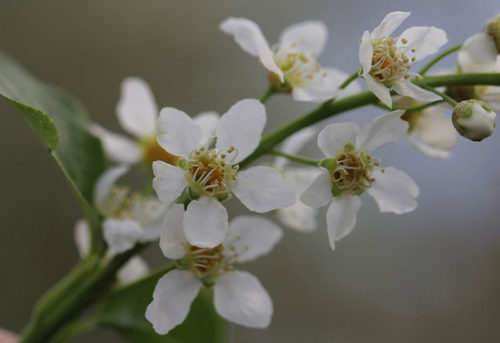
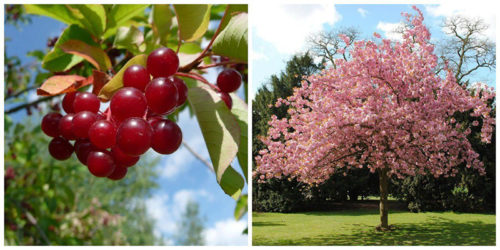

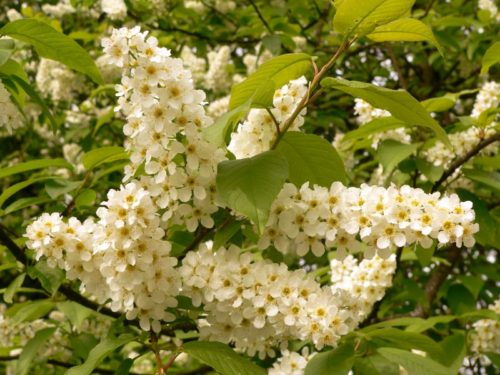
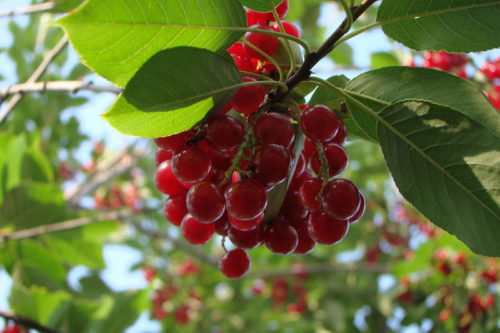
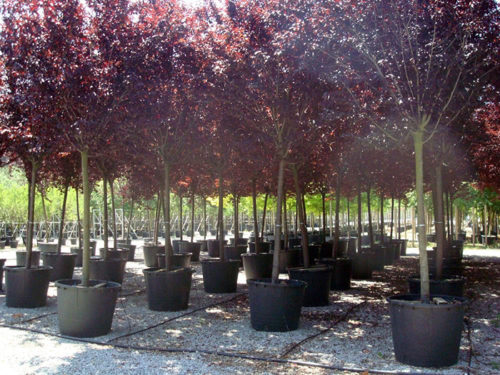
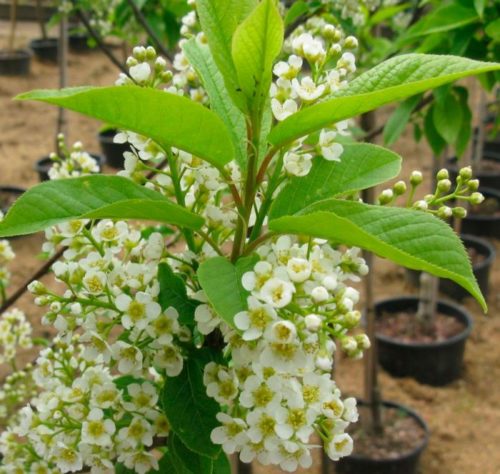
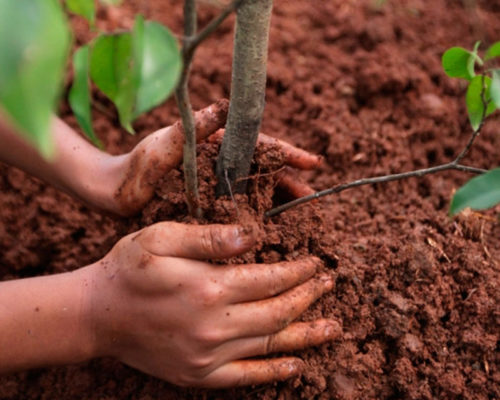
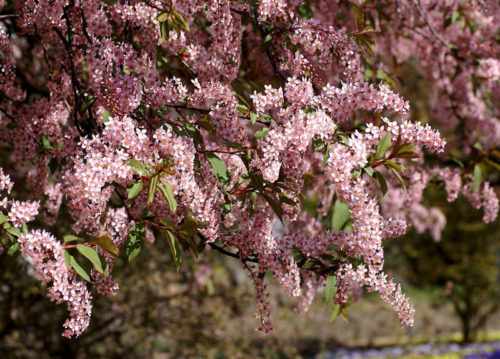
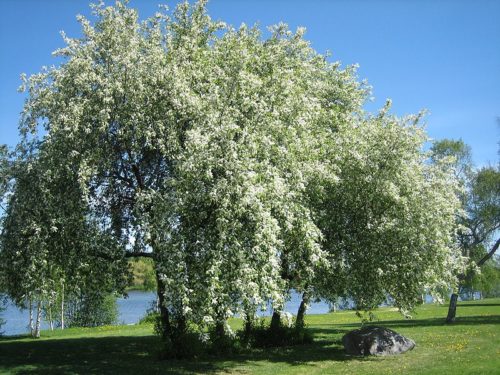
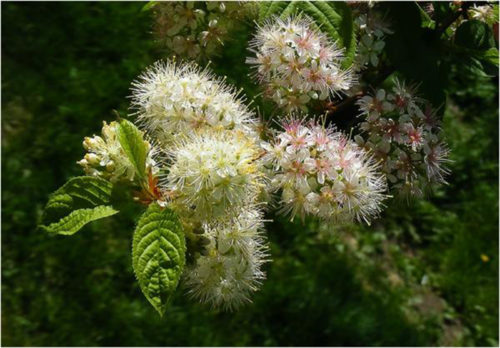
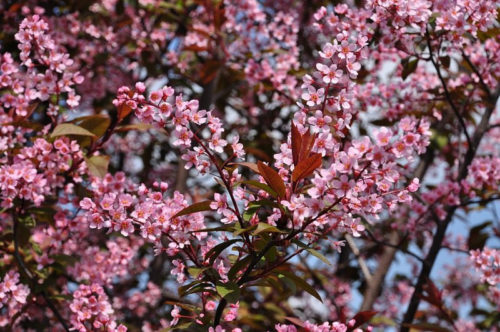
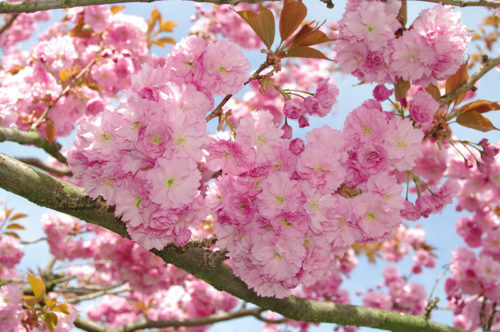












 Start a discussion ...
Start a discussion ...